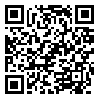Volume 6, Issue 1 (March 2010)
IJEEE 2010, 6(1): 1-19 |
Back to browse issues page
Abstract: (21334 Views)
The aim of this study is to address a new feature extraction method in the area of the heart arrhythmia classification based on a metric with simple mathematical calculation called Curve-Length Method (CLM). In the presented method, curve length of the under study excerpted segment of signal is considered as an informative feature in which the effect of important geometric parameters of the original signal can be found. To show merits of the presented method, first the original electrocardiogram (ECG) in lead I is pre-processed by removing its baseline wander then by scaling it in the [-1,1] interval. In the next step, using a trous method, discrete wavelet scales 23 and 24 and smoothing function scale 22 are extracted. Afterwards, segments including samples of the QRS complex, P and T waves are estimated via an approximation criterion and CLM is implemented to extract corresponding features from aforementioned scales, smoothing function and also from each original segment. The resulted feature vector (including 12 components) is used to tune an Adaptive Network Fuzzy Inference System (ANFIS) classifier. The presented strategy is applied to classify four categories found in the MIT-BIH Arrhythmia Database namely as Atrial Premature Beat (APB), Left Bundle Branch Block (LBBB), Right Bundle Branch Block (RBBB) and Premature Ventricular Contraction (PVC) and average values of Se = 99.81%, P+ = 99.80%, Sp = 99.81% and Acc = 99.72% are obtained for sensitivity, positive predictivity, specifity and accuracy respectively showing marginal improvement of the heart arrhythmia classification performance.
Keywords: Feature Extraction , Curve Length Method , Adaptive Network Fuzzy Inference System , Arrhythmia Classification , Left Bundle Branch Block , Right Bundle Branch Block , Atrial Premature Beat , Premature Ventricular Beat
Type of Study: Research Paper |
Subject:
Biomedical Signal & Image Processing
Received: 2010/03/07 | Revised: 2010/03/07 | Accepted: 2013/12/30
Received: 2010/03/07 | Revised: 2010/03/07 | Accepted: 2013/12/30
| Rights and permissions | |
 |
This work is licensed under a Creative Commons Attribution-NonCommercial 4.0 International License. |



